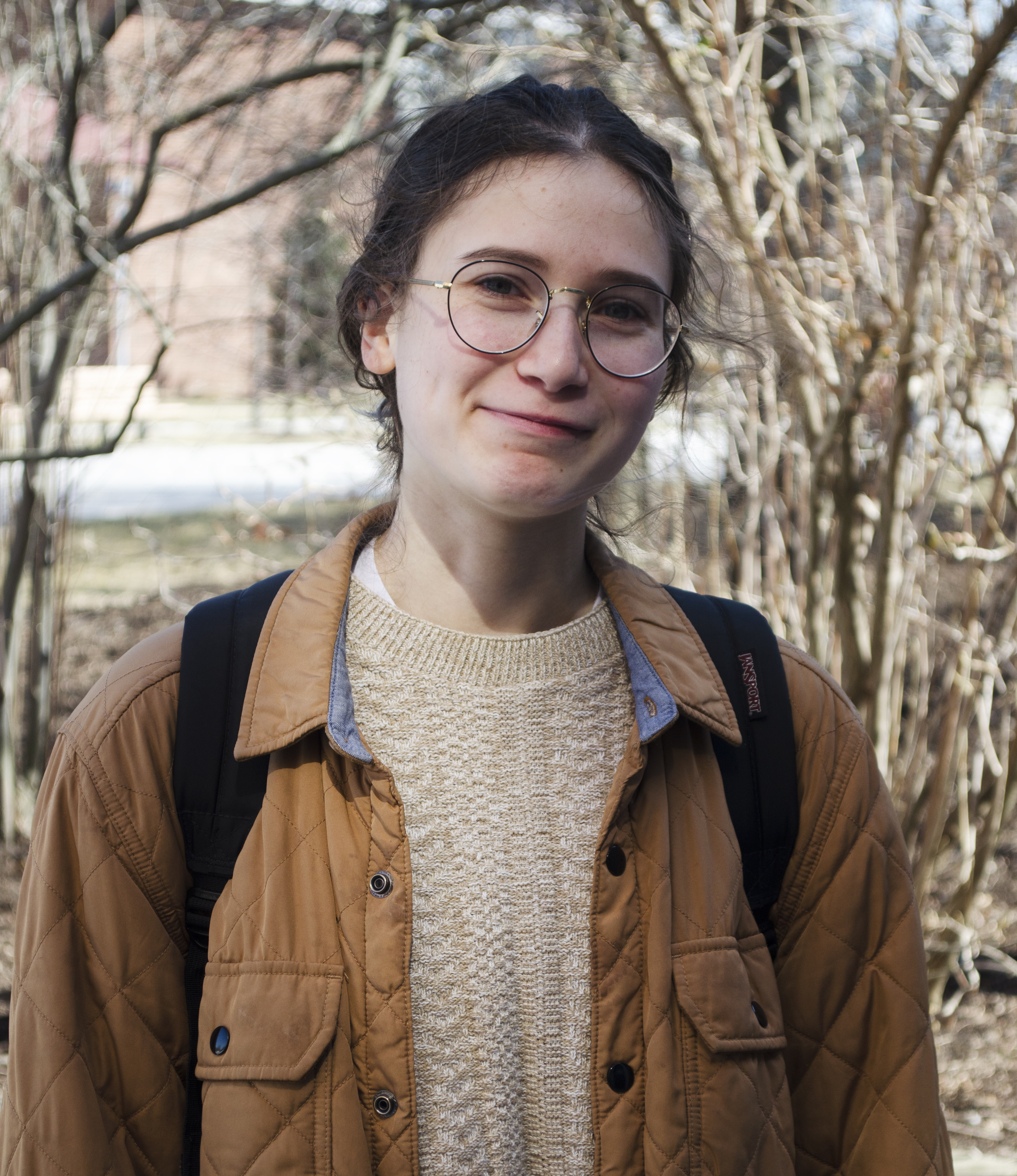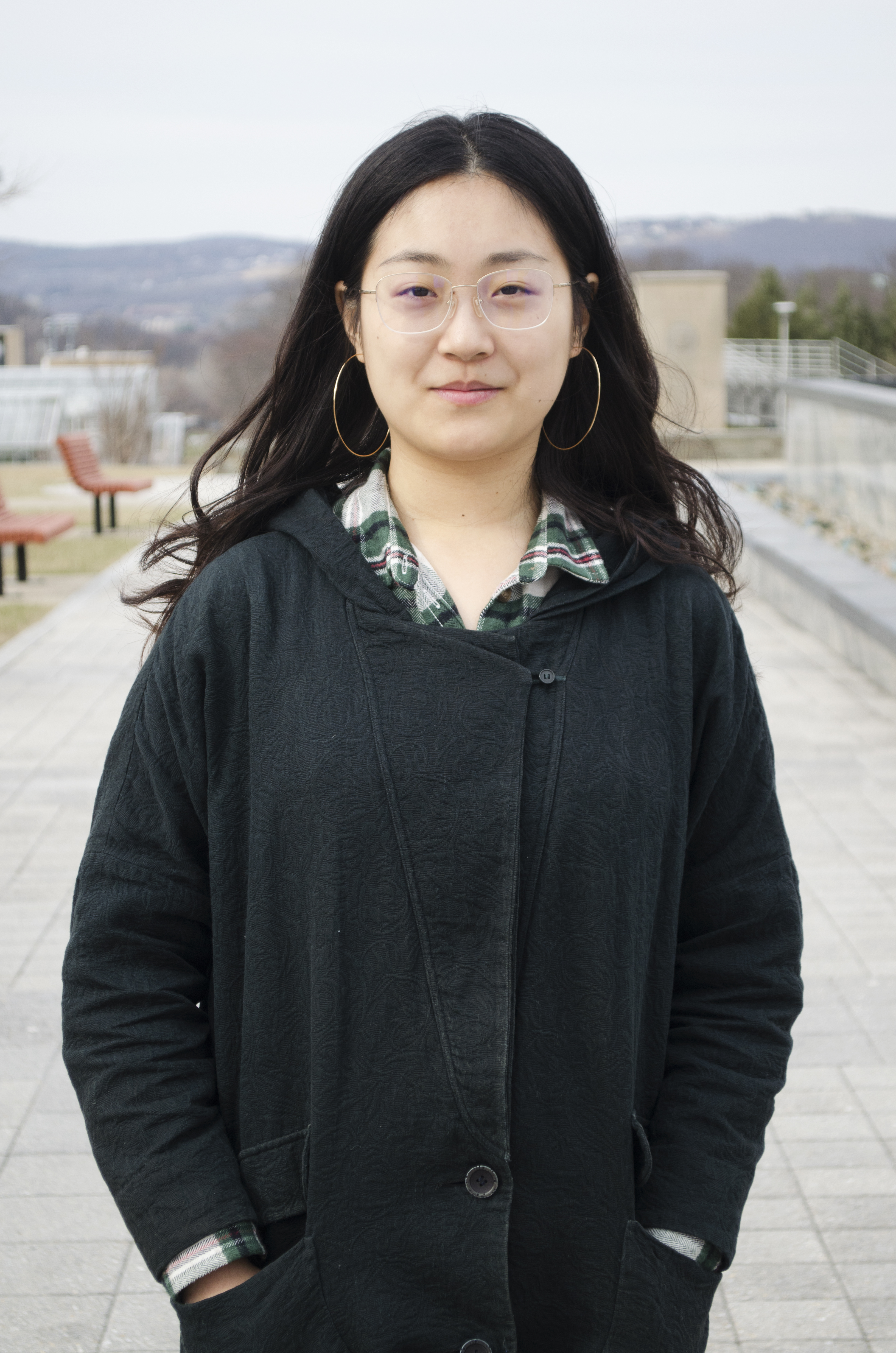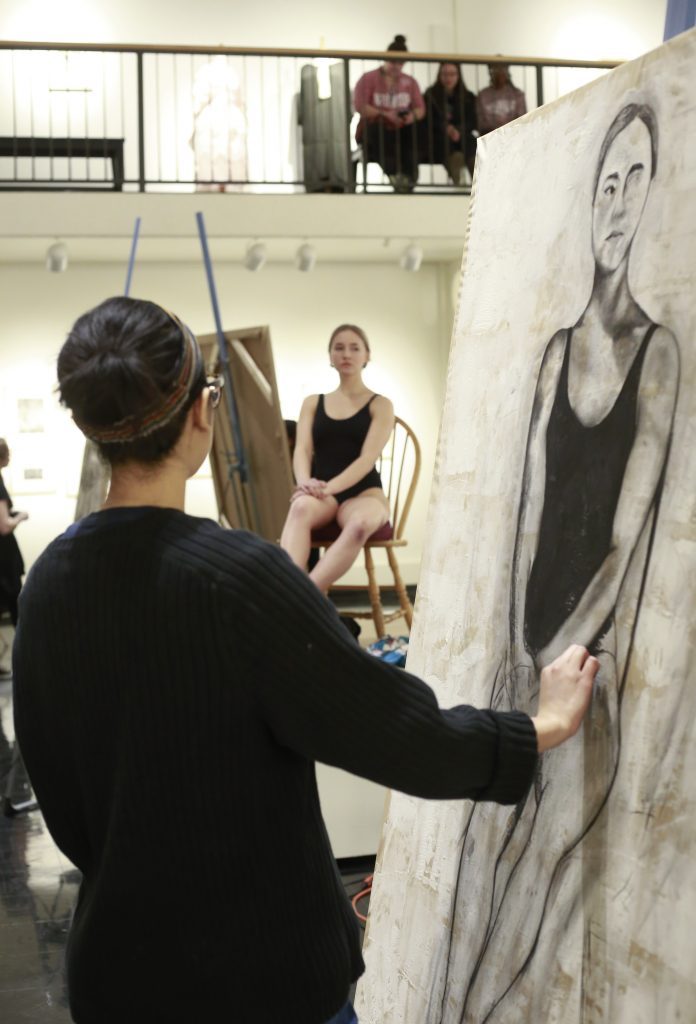Pipe Dream interviewed three Binghamton University students participating in the fourth annual 24-hour Drawing Marathon. The participants must sketch a live figure on a life-size canvas during the duration of 24 hours at the BU Art Museum.

Troy Richards is a graduate student in the 4+1 program for mechanical engineering. As an undergraduate, he minored in art with a concentration in drawing.
Pipe Dream: How long have you been drawing?
Troy Richards: Pretty much my whole life, as long as I was old enough to hold something to draw with.
PD: Is life drawing the style you’ve focused most on as an art student?
TR: I would say yes. I took the life drawing class, and that was my probably my favorite class, and I also TA’d the class the next semester. I’m also the only person who’s done the drawing marathon every year it’s happened. This is the fourth year they’ve had the event, and this is my fifth year, so I entered as a sophomore.
PD: What made you decide to enter as a sophomore?
TR: My life drawing professor was the guy who created the whole event, so he kind of encouraged his students to apply for it.
PD: How is drawing something for 24 hours different from drawing something over the course of a few weeks?
TR: It’s a lot more stressful, it’s difficult to deal with the tiredness that eventually occurs. I think the hardest part is probably deciding that you’re done. Once it gets to the final few hours, it’s like, there’s more I could do, but I’m tired, and it’s good enough.
PD: How has the way you’ve tackled the task changed with experience?
TR: I think I’ve generally taken the same approach every time. I just take it slow and I erase a lot, which I encourage. Especially with the medium, which is charcoal, it helps to take a first attempt of what you want to do and then erase it. Because it’s charcoal, you can still see it, and smudging it creates kind of an interesting effect.
PD: What keeps you coming back?
TR: Now that I’m done with my art minor, I don’t do much with art anymore, so it’s just a fun thing to do to keep doing art.
PD: What do you think is the best thing that can be gained from doing the art marathon?
TR: It can help with time management — you’re actually focused in the way you would be if you might have deadlines. If you’re doing stuff like commissions, it could be somewhat helpful, although I don’t think getting a 24-hour commission would be very realistic.
PD: Do you have any expectations for this year in particular?
TR: I’ll probably try more interesting stuff this year. After not winning it for three years, at this point, I’m probably going to try more creative and interesting stuff.
PD: Has participating in the event annually since sophomore year changed your perspective as an artist?
TR: I don’t think it’s changed a whole lot. I think the biggest effect it’s had on my art career has been taking more classes with that professor that started the event, Blazo [Kovacevic]. He’s a really interesting professor to have. I think that doing the art marathon so many times has made me care less about it. At this point it’s just something fun to do, and if you win that’s cool too.

Esther Wagner is a sophomore double-majoring in integrative neuroscience and fine arts.
Pipe Dream: Is this your first time doing the drawing marathon?
Esther Wagner: Yeah, I took life drawing last semester which is the same format — the giant canvas, and you’re drawing models. I was going to apply for the marathon last year, but now I have the experience to do it well.
PD: Is life drawing your favorite style to work in?
EW: I love portraiture, and that’s usually what I draw, so life drawing and drawing the human body is very close to that.
PD: Do you do art as a hobby as well as academically?
EW: Most of the projects that I do while I’m in school are for school, but on breaks I draw, I doodle — I have sketchbooks, so I try to do it as much as I can.
PD: How is the work you do recreationally different from the work you do for school?
EW: It’s definitely smaller scale, I’d say it’s pretty similar actually. The drawing I do recreationally is more for practice. The classes I’m in now focus more on creativity and how to manipulate certain materials, whereas if I’m doodling in my sketchbook, it’s usually that I’m practicing some kind of technical skill.
PD: Why did you decide to enter?
EW: I TA’d for life drawing this semester and the professor that I TA’d with is one of the judges for the competition, so he suggested that I apply. It was something I had thought about doing before, I was kind of [on] the edge, but then he told me I should go for it and I did. He’s remaining completely objective, by the way.
PD: Have you ever done something similar to this in that it’s a high-pressure atmosphere?
EW: No. There are people who say that drawing or making art is very relaxing, that it calms you down or is something fun to do. I’ve never had that experience with any kind of art, even when I’m doing it for myself. It’s always kind of a frustrating, tedious operation, so I guess, in a way, I put a lot of pressure on myself when I’m doing it, but I’ve never competed.
PD: When you say “frustrating,” do you mean that the process is sort of tedious, but that the end result makes it worthwhile for you?
EW: Yeah, despite it being a frustrating, tedious process, I do enjoy it. I think the result, whether it comes out the way I want it to or not, is still something worth getting to. I can’t imagine not doing it, no matter how much it can be annoying at times. I prefer to draw as realistically as I can, so usually the frustrating part is trying to get what you see onto the paper.
PD: What do you think will be the greatest challenge going into this competition for the first time?
EW: Definitely going for 24 hours pretty much straight. I think we get breaks every hour or other hour — I don’t know the schedule yet, but a lot of the time, especially in classes, you work for two hours, and then you get a day off and then you go back to the class. Even if I’m doing my own work, I work for a while, get frustrated, need to take a break and then go back to it. So I think the hardest thing will just be to keep pushing myself to keep going and keep drawing and keep messing up and making it better. That being said, I’m still very much looking forward to it.
PD: How do think this event will help you grow as an artist?
EW: I think just being in competition with other artists is a way to grow yourself. In a classroom setting, we have critiques and professors who come look at our work and criticize it and tell us which direction to grow in, but you’re not comparing your work to anyone else’s. A lot of times, I think it’s important to look at someone else’s work and see how their process goes and how they get results and actually incorporate it into your own process.

Ke Chen is a sophomore majoring in English. She is also an exchange student from Beijing International Studies University.
Pipe Dream: Why did you decide to participate in the marathon? Were you selected, or can anyone apply?
Ke Chen: Anyone can apply via email. You have to hand in 10 pieces of your previous drawings, but I didn’t have 10 pieces, and I didn’t know about the event at all, and then I got an email from Binghamton University Fine Arts Society (BUFAS), who said that they would be holding a short drawing marathon. They wanted to select one winner that would automatically go into the actual marathon, and I won the spot. It was a two-hour live drawing and there was a student who modeled.
PC: Have you ever participated in the marathon before?
KC: No, this is my first time. This is also my first time drawing on a life-size canvas.
PD: Why did you decide to major in English instead of art?
KC: When I was in high school, I thought about majoring in studio art, but I wasn’t confident enough to get into the field. So I chose to take the “normal” path.
PD: Can you tell me a little bit about your background in art?
KC: In high school, I was professionally trained during a summer session. I mainly do graphite drawings and a little bit of charcoal. I have to learn more charcoal because the marathon only allows charcoal. I felt a little bit panicked about that because my previous work was all with graphite, so I needed to transfer my skills within one week.
PD: How have you been preparing for the marathon?
KC: After I got the email that I got in, I have been practicing a charcoal drawing. This week, I hope to practice more with full body figures and shading.
PD: You mentioned that most of your artwork is with graphite. Is there another medium you like to use?
KC: I’ve never tried color painting because they’re more time-consuming and expensive, but I really want to try that because you can be more colorful and creative with pigments. I think I’m also happy with only doing art in black and white.
PD: Since the marathon is 24 hours, how do you plan to stay awake the whole time?
KC: I will definitely have to buy two or three cups of coffee. And I don’t think it’s a big problem for me because I did this a lot before, like trying to stay up the whole night, and I’ve felt okay after.
PD: What are you most nervous about for the marathon?
KC: They don’t allow you to bring your own charcoal or drawing materials. They provide everything so everyone has to use the same materials for drawing. I actually use weird drawing tools, like brushes when doing charcoal brushes, but I don’t think they’ll provide that. They only provide standard drawing supplies because they want to make it fair. I think it’s kind of mean because everyone has their own weird ways of drawing.



